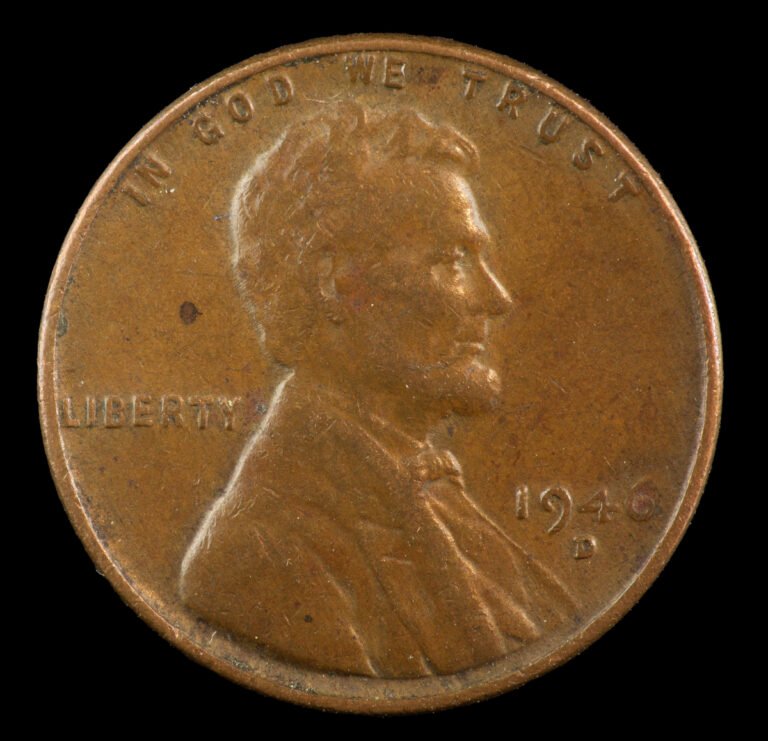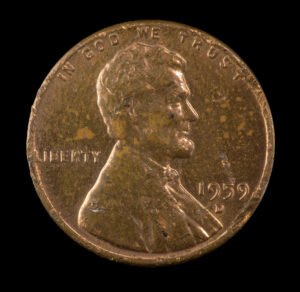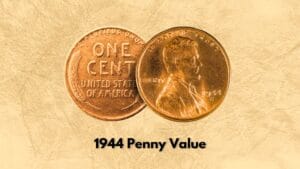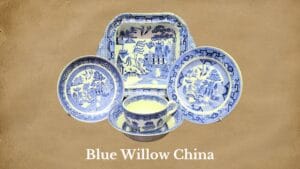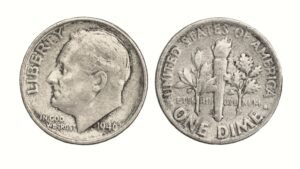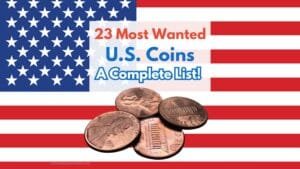Coming from the iconic Lincoln Cent series, the 1946 Lincoln Wheat Penny might seem like just another common copper penny. But did you know that a rare 1946 penny was sold for a whopping $16,200 in a coin auction? Shocking, right?
However, not all 1946 Lincoln pennies are worth this much; most only fetch a few cents unless they are in excellent condition or have some rarities. So, what are these rarities?
Discover all the critical factors, including rare 1946 penny errors and mint marks, in this detailed guide and learn to assess the true value of your copper coin!
Brief History of the 1946 Lincoln Penny
A major part of the Wheat Penny series, the 1946 Lincoln Penny is special for coin collectors as it marked the first full year of penny production after World War II ended in 1945. This year’s total mintage of over 1.5 billion cents reflected the post-war economic boom.
The coin features the traditional Lincoln penny design, featuring Abraham Lincoln’s profile, which had been used since 1909. By 1946, it was familiar among Americans. However, the design was finally replaced in 1958 by the Lincoln Memorial design, making the wheat reverse cents collectible!
| 1946 Lincoln Wheat Cent | Key Features & Facts |
| Coin Composition | 95% Copper, 5% Tin and Zinc |
| Minting Location | Philadelphia, Denver, San Francisco |
| Minting Year | 1946 |
| Face Value | 1-cent (0.01$) |
| Weight | 3.11 grams |
| Diameter | 19.05 mm |
| Thickness | 1.52 mm |
| Designer | Victor David Brenner |
| Mint Marks | D – Denver Mint, S – San Francisco no mint mark – Philadelphia Mint |
| Total Mintage | 1,505,445,000 |
How to Spot a 1946 Lincoln Penny (Design & Composition)
You can easily identify a 1946 Lincoln Penny with its iconic designs on both sides and its traditional composition and dimensions. Let’s examine these features:
1946 Lincoln Penny Obverse:
- Portrait of Abraham Lincoln facing right
- The words “IN GOD WE TRUST” motto above Lincoln’s head
- The word “LIBERTY” to Lincoln’s left
- The mint date (1946) to Lincoln’s right
- The designer’s initials “VDB” (for Victor David Brenner) on Lincoln’s shoulder (visible under magnification)
- The mint mark, if present, below the mint year
1946 Lincoln Penny Reverse:
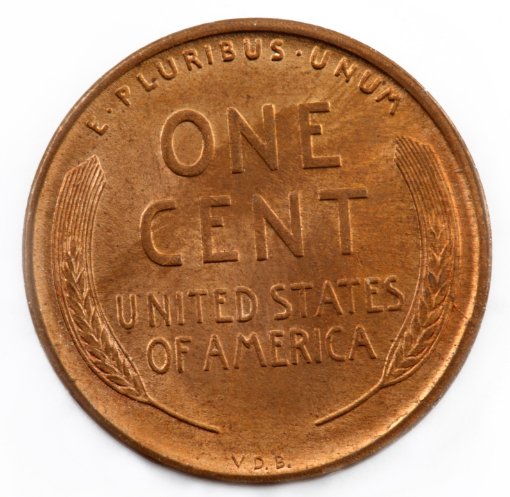
- Two wheat stalks framing the edges
- The phrase “E PLURIBUS UNUM” across the top
- “ONE CENT” face value in large text in the center
- The words “UNITED STATES OF AMERICA” below the denomination text
Coin Composition and Dimensions:
The 1946 Lincoln Penny was made of the classic “bronze” alloy, which consists of 95% copper, 5% tin, and zinc. This alloy gives the American Cent its traditional reddish-brown color and weight of 3.11 grams.
As for its dimensions, the 1946 Lincoln Wheat Cent measures 19 mm in diameter and has a smooth edge (not reeded) with a thickness of 1.55 mm.
Finding the 1946 Lincoln Wheat Penny Value (4 Key Factors)
The average value of a 1946 Wheat Penny can range from 2 to 5 cents to a few hundred dollars, with rare coins fetching up to a few thousand dollars. Let’s analyze the key factors that affect the final value of a 1946 penny.
1. Coin Grading and Condition
The condition of a 1946 Lincoln penny is the first and most important factor in determining its value. Generally, these cents are graded (by coin grading services) on a scale from Poor (P-1) to Perfect Mint State (MS-70), with MS-67 or higher examples being valuable.
For example, a 1946-D Penny with an MS-64 grade is worth only around $10, but the same coin can sell for $100 – $300 with an MS-67 grade and up to $2,100 in a higher grade.
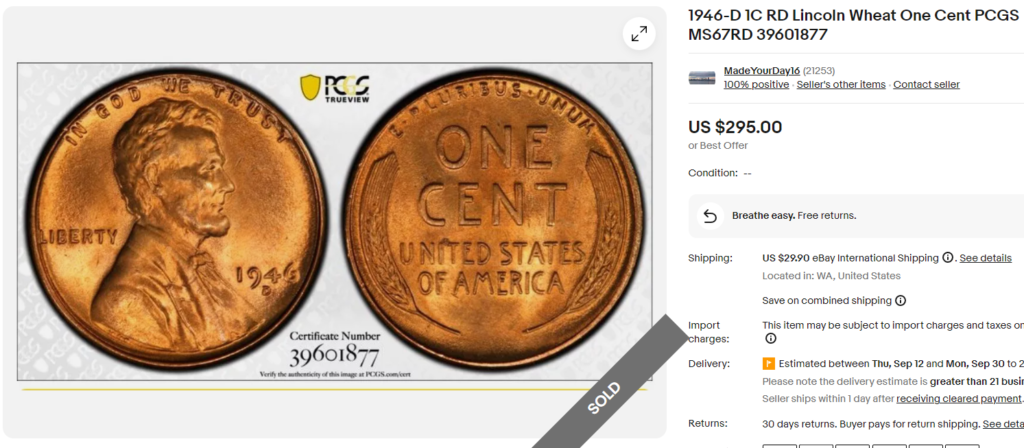
You can also examine or grade your 1946 Wheat Cent’s condition by observing these key areas and their details:
- Lincoln’s cheek and jaw area
- Hair details
- Overall luster and color
- The presence or absence of contact marks
2. Coin Toning & Coloration
The color of a 1946 Lincoln penny, an aspect of the coin condition itself, can significantly affect its worth. Copper cents are typically graded under three color categories based on toning or discoloration:
- Red (RD): The 1946 pennies have 95% or more of their original reddish mint luster. RD-graded cents are the most valuable, often commanding 50-80% more than similar brown pennies.
- Red-Brown (RB): These coins only have 10-95% of their original red color. Being more common than red pennies, they are valued less than red ones but slightly more than brown examples.
- Brown (BN): The BN-graded 1946 Wheat Cents are the most common coins, with less than 5% remaining original red finish. While less valuable than RD and RB pennies, some coin freaks can pay a lot for an extreme, rare brown toning!
3. Mint Marks & Mintage
Mint marks or mintage are the next important valuation factor for your 1946 copper cent. The total mintage for the 1946 Lincoln Wheat Cent across all mints was 1,505,445,000, which makes it a common coin to find.
You can track the mint location of a 1946 Wheat Penny by the mint mark found on the coin’s obverse right below the mint date.
Here’s a breakdown of 1946 Lincoln Penny’s mintage and rarity as per different mints:
- 1946 Lincoln Penny No Mint Mark: The Philadelphia Mint produced the most 1946 pennies, with a high mintage of 991,655,000. Coins struck by the Philadelphia Mint bear no mint mark. The 1946 no mint mark penny is worth the face value (1-2 cents) in circulated condition and $5-$25 in common mint state (MS-65).
- 1946 D Lincoln Penny: The Denver Mint struck 315,690,000 1946 wheat pennies, identified by the “D” mint mark. The cents are slightly less common than 1946 no mint mark pennies. Circulated 1946-D pennies are worth face value, while mint coins can range from $1-$15, with top-grade examples (MS-67+) exceeding the $2,000 mark.
- 1946 S Lincoln Penny: With the lowest mintage of 198,100,000, the 1946 pennies struck by the San Francisco Mint are the least common. You can spot them by the “S” mint mark. Uncirculated coins can range from $2 to $20, with higher-grade coins fetching $1,000 or more; one MS-67+ example sold for an auction record price of $16,800 on Heritage Auctions.
Here is a detailed 1946 Lincoln Penny value chart to assess your coin’s value based on coin grades and mint marks. (The given values are taken only from RD-graded coins)
| Coin Grades | 1946 1C No Mint Mark | 1946-D 1C | 1946-S 1C |
| Poor (0) to Extremely Fine (XF45) | Face value or a few more cents | Face value or a few more cents | Face value or a few more cents |
| Almost Uncirculated (AU50) to Mint State (MS60) | 50 cents to $1 | 50 cents to $1 | 50 cents to $1 |
| Mint State (MS61 – MS64) | $1 – $17 | $1 – $10 | $1 – $5 |
| Mint State (MS65 – MS66+) | $10 – $90 | $10 – $100 | $5 – $100 |
| Mint State (MS67 – MS67+) | $100 – $900+ | $100 – $2,100+ | $100 – $1,500 |
| Mint State (MS68 or Above) | N/A | N/A | N/A |
4. 1946 Lincoln Wheat Penny Errors & Varieties List
A mint error, an anomaly that occurs during the mint process, can increase the value of your 1946 penny to a great extent. Here are the most valuable 1946 Lincoln Penny errors to look for:
Doubled Die Obverse
This mint error happens when the die impresses the obverse design twice on a 1946 penny at slightly different angles. To identify a DDO error, look for doubling in the letters “LIBERTY” and “IN GOD WE TRUST,” the mint date “1946,” and Lincoln’s profile.
A 1946 wheat penny with a DDO error can be worth $25 – $500 or more, depending on the coin’s condition, severity, and the doubling’s location.
Off-center Strike
This mint error occurs when the planchet is misaligned during die striking. As a result, part of the design goes missing. The value of this rare coin depends on the degree of off-center striking.
Generally, 1946 pennies with minor off-center strikes (5-10%) are $10 – $50 more valuable than regular pennies, while those with major off-center strikes are $100 – $200 more valuable. For example, an MS63BN graded 1946-S Penny sold for almost $200, an exceptional price for a regular 1946 cent with this grade.
Repunched Mint Mark
As the name suggests, this rare coin is a result of the mint mark getting punched multiple times, slightly offset. Depending on the visibility of the punched mark, this error can add $5 – $10 to the coin’s value.
Struck on a Dime Planchet
This is a wrong planchet or transitional error in which a 1946 Lincoln Wheat Cent is struck on a dime coin planchet. Extremely hard to find, a rare coin with dime planchet error can be worth $300 to $500 in Almost Uncirculated condition and much more in mint state, like this AU50 example that sold for $470 on Heritage Auctions.
How to Know If a 1946 Wheat Penny Is Fake?
If you are unsure about the authenticity of your 1946 Lincoln Cent, follow these steps to easily identify a fake coin:
- Verify the Composition: The first step is to ensure your 1946 penny has a 95% Copper and 5% Zinc composition. Bring a magnet close to your coin. If the coin reacts, it’s fake.
- Check the Weight and Dimensions: Use precise scales to check your penny’s dimensions and weight. If the specifications don’t match the ideal weight and size of a 1946 penny, it’s likely a counterfeit.
- Check the Date Font: The “1946” mint date should match the style and font used in 1946. Fake pennies likely feature incorrect fonts or positioning.
- Examine the Mint Mark: If present, the mint mark of genuine 1946 pennies will be below the mint year. The Philadelphia-minted coins don’t have a mint mark. Also, ensure the mint mark’s size, position, and style match the 1946 issue.
If still in doubt, consult a professional coin grading service to confirm whether your 1946 penny is authentic.
As we saw, the 1946 Lincoln pennies are common and of modest value. However, certain factors, like mint marks and errors, can make them quite rare and highly valued by collectors. So, before you buy or sell your 1946 wheat penny, find its best price using this price guide.
You can also look out for other valuable pennies with my expert guides, such as the 1969 penny, the 1942 penny, the 1983 penny, and the 1909 VDB penny. These pennies are known for their rarity and premium worth in the coin-collecting community!
Note: This article is intended for informational, educational, and entertainment purposes only. Some images are illustrative and may not represent actual brands, products, or related entities. All trademarks, product names, brand logos, packaging, and other intellectual property referenced remain the exclusive property of their respective owners. Any brand mentions or references are provided solely for descriptive and educational context and do not imply any formal or commercial association.

